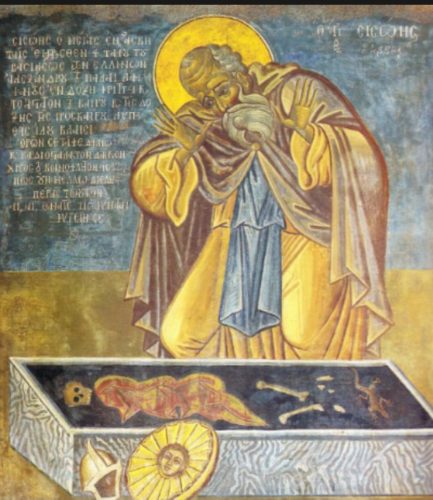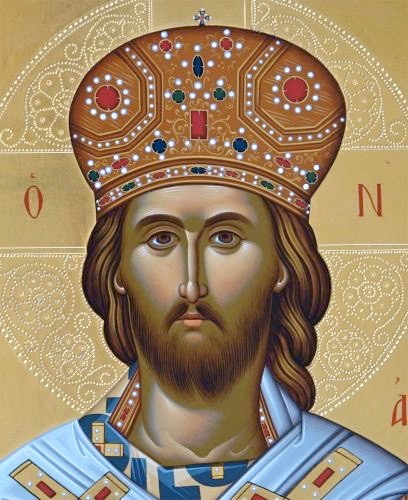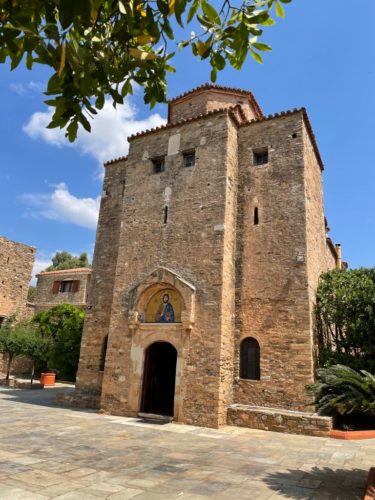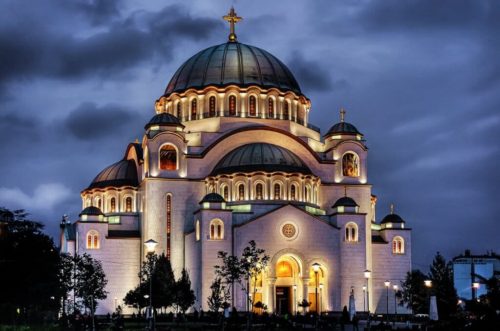
Abba Sisoes the Great at the Tomb of Alexander the Great
I read a beautiful reflection on the icon of Abba Sisoes the Great at the tomb of Alexander the Great and wanted to share it. In our present day climate of “likes” and “internet influencers,” I thought this to be very relevant and something for us all to think about as we consider the ego driven pursuit of fame and the values of our age.
Abba Sisoes was born in 367 and died in AD 429. He became an ascetic in the desert of Thebes in Egypt. His memory is celebrated on July 6 and belongs to the first generation of great ascetics who followed St. Anthony the Great.
The monastery of Abba Sisoes, located in the valley of Nitria in the region of Wadi el Natroun in Egypt, is one of the ancient monasteries of the Skete, the cradle of Christian monasticism, which has been operating since the 4th century AD. The monastery contains the relic of Saint Sisoes which is said to be perfectly preserved on a red cloth.
The monks claim that it is common for Saint Sisoes to perform miracles for the true believers and is also considered one of the most important monastic saints of Orthodox and Coptic Christians.
The disciples of Saint Sisoes, who are considered to be the first to depict the relevant scene, describe it as follows: ‘Sisoes the Great, at the tomb of the glorious King of the Greeks, Alexander, is terrified and expresses his sorrow over the ephemeral glories of this life.
Saint Sisoes stands at the open tomb of Alexander the Great, so he weeps and exclaims:
‘Seeing you in a grave, I am timid and frightened at your sight and I shed tears from my heart, bringing to my mind the debt that all people have to pay (that is, death), so I will suffer such an end. Ah, ah death, who is the one who can avoid you?’
We hear in the Funeral Service of our Holy Church this prayer:
“Where is the pleasure in life which is unmixed with sorrow? Where the glory which on earth stood firm and unchanged? All things are weaker than shadow, all more elusive than dreams; comes in one fell stroke, and Death in turn, prevails over all these vanities. Wherefore in the Light, O Christ, of Your countenance, and in the sweetness of Your beauty, to him (her) whom You have chosen grant repose, for you are the Friend of Mankind.”
The reality of death viewed through the saving grace of the Lord is the only comfort and solace we as Orthodox Christians have in our lives. This is the lesson of this beautiful story of Abba Sisoes. God Bless….FrG








